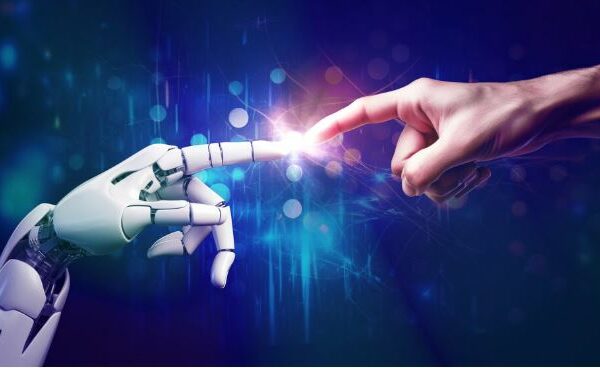 The meteoric rise of artificial intelligence (AI) tools like ChatGPT, Microsoft Copilot and Gemini has created immense expectations. AI promises to accelerate innovation, design and personalize content, handle manual tasks, and allow humans to focus on creativity, brainstorming and decision-making.
The meteoric rise of artificial intelligence (AI) tools like ChatGPT, Microsoft Copilot and Gemini has created immense expectations. AI promises to accelerate innovation, design and personalize content, handle manual tasks, and allow humans to focus on creativity, brainstorming and decision-making.
But AI’s vast potential may be clouding a growing challenge. Emerging reports suggest AI’s uncertain, fast-changing nature is contributing to a decline in employees’ mental health.
Recent data shows widespread concerns among workers:
- Nearly 80% of employees don’t trust organizations to deploy AI responsibly, according to the Bentley-Gallup Business in Society Report.
- More than 70% of employees are concerned about AI, reports the business management firm EY. Employees are most anxious about the quality of AI, the speed of adoption, its effect on the workplace, legal implications and cybersecurity.
- According to the American Psychological Association’s (APA’s) “Work in America” survey, 40% of employees fear AI will replace their jobs.
In addition to increasing employees’ stress levels and mental health challenges, these worries reduce job performance and productivity. The APA also reports a gap between employee and employer concerns over AI anxiety. Many companies with anxious employees think their workplace is suited to strong mental health. This disconnect can worsen employees’ concerns.
Given AI’s current and expected growth, employers need to address employees’ anxiety. The following four concepts can help you reduce tech-related stress and build a healthier work environment:
- Transparency
- Training
- Mental health support
- Digital breaks
Transparency
As you highlight AI’s current uses and future benefits, point out ways it will strengthen your business and enhance employees’ roles. Then acknowledge employees’ fears amid potential changes.
The human resources association SHRM predicts few jobs will be entirely replaced by AI in the near future, but many will be altered. The consulting firm Gartner also predicts AI will eventually create more jobs than it replaces, but it notes that employee fears will grow during times of change and disruption.
If you plan to use AI to enhance current roles, reassure employees that your focus is on job productivity, not job loss. Communicate how AI can empower and support their work. Demonstrate ways AI can eliminate menial tasks and leave more time for creativity and brainstorming. Provide concrete examples, such as using AI to fill out forms, schedule meetings and interviews, and compile data into reports.
Training
Being replaced by AI is many employees’ biggest fear. In addition to communicating how AI can improve day-to-day workflows, provide employees with AI training.
Create a path for learning and development. Discuss the AI skills employees need to learn, and explain how they can build this knowledge. Training may include online learning programs, on-site education or college courses.
Committing to your employees’ future through professional development can reduce fears around AI-related job loss. According to the EY survey, 80% of employees say training and upskilling would make them more comfortable with AI.
Mental health support
Anxiety around AI gives you an opportunity to reinforce your general mental health benefits. Regularly send employees a list of resources. Top benefits include mental health screenings, affordable access to mental health providers, mindfulness apps, mental health workshops and education, and substance use treatment.
Employee assistance programs (EAPs) typically offer resources free to employees. These resources may include self-paced education and access to licensed counselors. EAPs can also connect employees to ongoing resources for mental health management.
In addition to traditional mental health benefits, communicate ways AI can improve mental health. For example, some vendors offer AI-enhanced mental health Q&As and education. Mental health platforms may also incorporate AI into cognitive behavioral therapy programs for stress and anxiety.
Digital breaks
Sometimes technology itself can reinforce fear of technology. Encourage employees to take technology-free breaks throughout the day. Ideas include taking a walk, talking to a colleague, reading a book, stretching and practicing mindfulness.
Breaks don’t need to be long to be effective. Short breaks can yield long-term benefits such as increased productivity and reduced burnout, according to research in the Harvard Business Review (HBR). HBR recommends getting outside when possible, but any physical movement, social connection or mindfulness can help employees recharge.
Being free of technology is essential for these breaks to be effective. HBR reports 97% of employees turn to social media during breaks, but this activity exacerbates exhaustion. Stepping away from technology can also remind employees of the power of social connections and the role humanity will continue to play at work.
Putting it all together
Addressing employees’ fears can enhance the acceptance, implementation and use of AI for business gains. It can also improve their mental well-being and job satisfaction. To examine your strategies for addressing AI anxiety, talk to your benefits adviser. They can help you review your mental health resources, communication practices and training opportunities.


